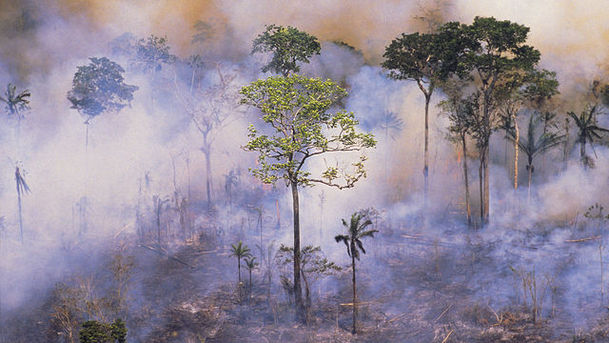Nature - Series 2 - The Future of the Amazon

Paul Evans investigates the Amazon. It has always been an evocative and mysterious place, but over the last few years it has become better known for deforestation and concern about its future. Paul looks at what makes the Amazon so special, what is threatening it and how those threats are affecting the wildlife that we still know so little about. Writers and explorers have always found the Amazon a place of inspiration and fascination. Hummingbirds, howler monkeys, vast rivers and mosquitoes are common images conjured up by the phrase 'the Amazon jungle', but that is fast disappearing. Future generations are more likely to think of soy bean plantations, cattle ranches and sugar cane rather than green frogs and towering trees. 60 per cent of the Amazon sits within Brazil, one of the fastest growing economies in the world, and so the pressure to convert much of this vast natural ecosystem into beef and beans that are transported around the world is huge. Big money talks loudly, and the call of the howler monkey and the flutter of the butterflies wings are barely heard amidst the cries for growth and development. Counterbalance that with the worldwide concern for climate change. 20 per cent of all greenhouse gases put into the atmosphere are caused by deforestation and so the world is putting pressure on countries like Brazil to protect the forests. It is a complicated picture of competing powers, but sitting in the middle is the rich and little studied wildlife of Amazonia. Researchers at Oregon State University have found that hummingbirds are very wary about crossing areas of cleared forest, even though that area can be only a few metres across. This has serious implications for pollination of the plants and flowers of the forest because hummingbirds along with other flying insects and mammals are vitally important transporters of pollen. If we clear forest and do not leave large enough corridors for the animals to move through then the forest will become more and more inbred and depleted. This is just one example of how we are deforesting the Amazon with little concern for the wildlife that lives there, and we do so at our peril. The Amazon is rich in life, an important source of medicine, home to many thousands of indigenous people and crucial for the healthy functioning of our climate. Never before has the world been so interested in its future and never before has there been the opportunity to save or destroy it as there is today.